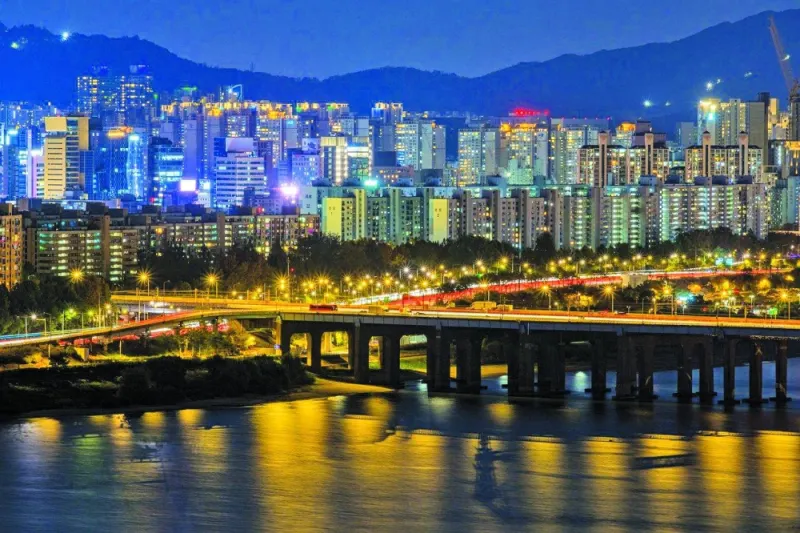South Korea is one of just a few countries ever to transform itself from a low- to high-income economy, and the only country to go from a recipient of aid from the OECD’s Development Assistance Committee to a DAC donor. It achieved this not by blindly following a pre-designed development path, but by taking the right detours.
There is no shortage of narratives purporting to explain South Korea’s development success, but most have serious flaws. For example, some scholars assert that, from the start, South Korea enjoyed important advantages, especially physical infrastructure and human capital that had been built up under Japanese colonial rule.
But most of South Korea’s infrastructure was destroyed during the Korean War. Moreover, the Japanese colonial government offered Koreans only a primary education, and just 47% of Korea’s children were actually enrolled. It was not until after the end of colonial rule in 1945 that primary-school enrolment surged, reaching 82% in 1949, with primary education becoming compulsory in 1950.
As many African countries can attest, beginning one’s development journey after decades of colonial rule and years of civil war is hardly advantageous. South Korea did not even have any commodities to export after the war, as all the minerals on the Korean Peninsula were located in the North. And it faced severe food shortages, which left it dependent on food aid from the US throughout the 1950s and the 1960s.
When Park Chung-hee’s military government seized power in 1961, it had to prioritise feeding the population over advancing industrialisation. To that end, the government instituted a dual-price policy for grain, purchasing it from farmers at high prices and selling it to consumers for low prices.
This represented a sharp reversal of the government’s approach during the 1950s, when it set food prices low in order to keep it accessible and limit inflation – an approach that reduced weakened farmers’ incentive to improve productivity. The government also developed a new high-yielding rice variety, which it launched in 1972.
South Korea’s military government intervened in the economy in other ways, too. In fact, though some scholars view South Korea’s economic miracle as a kind of vindication of the so-called Washington Consensus, the truth is that the government took a measured approach to financial and trade liberalisation. Notably, one of Park’s first acts after taking power was to nationalise commercial banks, in order to cope with the extreme scarcity of capital that resulted from low domestic savings.
The benefits of rapid financial and trade liberalization, as the Washington Consensus prescribes, have tended to be short-lived or to follow stop-and-go cycles in developing economies, because the private sector lacks the capabilities it needs to keep up. For example, in some African countries, such as Uganda, commercial and foreign banks charge very high interest rates that undermine critical investment in domestic manufacturing capabilities and encourage capital flight.
But in South Korea, banks were privatised only after the government had spent nearly two decades keeping interest rates low, thereby stimulating investment, and making sure that savings were being channelled toward boosting the manufacturing sector’s capacity. This contributed to such strong income growth that, despite suppressed interest rates, the domestic savings rate soared from 9% of GDP in the early 1960s to approximately 30% in the mid-1980s.
South Korea took a similarly judicious approach to trade liberalisation. When a country liberalises trade, local firms must be able to compete with foreign companies. If they cannot, foreign firms could establish monopolies or destroy the local industrial base unless the government implements protective measures.
In South Korea, that protection came in the form of very high tariffs on consumer goods, aimed at allowing the export industries of the future to flourish before they were subjected to excessive foreign competition. Protected domestic firms used their monopoly rents to fund investments, because government protections were conditioned on export performance, and firms were still exposed to the discipline of world export markets. Meanwhile, capital goods, which Korea had to import, were subject to very low tariffs.
Another prominent development narrative focuses on the role of institutions. Daron Acemoglu, Simon Johnson, and James A. Robinson argue that developing economies with extractive institutions – typical in state-capitalist systems – fail to progress, whereas those with inclusive (or democratic) institutions, like South Korea, tend to succeed.
But South Korea’s development success occurred under an authoritarian state-capitalist system. Furthermore, Edward L Glaeser and his colleagues have found that human capital has a more robust link to economic growth than the institutional variable. So, the real story seems to be that South Korean investment in human capital under the authoritarian regime spurred growth, thereby giving rise to a middle class that demanded democracy.
Finally, some scholars highlight the contrast between Asian countries’ embrace of export-led growth strategies and the inward-looking import-substitution policies that many Latin American countries maintained. But here, too, South Korea went its own way, simultaneously implementing an export-oriented growth strategy and pursuing import substitution.
The problem was that, to produce goods for export, domestic firms had to import capital and intermediate goods from abroad – an expensive proposition that contributed to South Korea’s persistent trade deficits through the late 1980s. So, the government sought to replace those goods with domestically produced alternatives. South Korea’s backward participation in global value chains – reflected in the ratio of foreign value-added content in exports to gross total exports – decreased between the mid-1980s and late 1990s.
Over the past several decades, South Korea has transformed itself from an authoritarian regime with a half-closed, state-led economy into a robust democracy with a very open market economy. (Today, South Korea is the only country with free-trade agreements with the US, the European Union, China, and India.) But it did not run directly toward this outcome. Instead, it went slow where it needed to and took calculated detours, which turned out to be the most efficient development path. – Project Syndicate
• Keun Lee, a former vice chair of the National Economic Advisory Council for the President of South Korea, is Distinguished Professor of Economics at Seoul National University, a fellow at CIFAR, an editor at Research Policy, and the author of Innovation-Development Detours for Latecomers: Managing Global-Local Interfaces in the De-Globalisation Era (Cambridge University Press, 2024).

IN A LEAGUE OF ITS OWN: Today, South Korea is the only country with free-trade agreements with the US, the European Union, China, and India.


